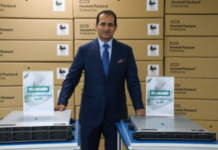Seattle– In a bid to take on Amazon Web Services (AWS) in the field of space Cloud business, Microsoft on Tuesday introduced Azure Orbital to process satellite data at Cloud scale.
In July, AWS launched ‘Aerospace and Satellite Solutions’ business segment dedicated to accelerating innovation in the global aerospace and satellite industry.
According to Yves Pitsch, Principal Product Manager, Azure Networking, The new ground station service enables satellite operators to communicate to and control their satellites, process data, and scale operations directly with Microsoft Azure.
“With Azure Orbital, the ground segment, including the ground stations, network, and procedures, becomes a digital platform now integrated into Azure and complemented by many partners,” Pitsch said during the ‘Microsoft Ignite 2020′ virtual conference.
Data collected from space to observe Earth is instrumental in helping address global challenges such as climate change and furthering of scientific discovery and innovation.
The cloud is central to both modern communications scenarios for remote operations and the gathering, processing, and distributing the tremendous amounts of data from space, Microsoft said.
Amergint, Kratos, KSAT, KubOS, Viasat, US Electrodynamics Inc, and Viasat and have joined the ecosystem of Azure Orbital partners, each of them bringing their unique value and expertise for the benefits of our customers.
Azure Orbital enables satellite operators to schedule contacts with their spacecrafts and directly downlink data into their virtual network (VNet) in Azure.
Azure Virtual Networks are isolated, highly secure, and governed by Microsoft’s more than 90 compliance certifications covering applications and datasets.
Now in preview, Azure Orbital on-ramps your data directly into Azure, where it can immediately get processed with market-leading data analytics, geospatial tools, machine learning, and Azure AI services.
“Whether you choose to use Microsoft’ or partner ground stations, the digitized Radio Frequency (RF) signal from the antenna to the cloud can be transmitted using the VITA Radio Transport (VRT) format (VITA-49) and then subsequently be demodulated using custom modems or cloud modems offered by the platform,” the company explained.
Microsoft said it is well-positioned to support customer needs in gathering, transporting, and processing of geospatial data.
“With our intelligent cloud and edge strategy currently extending over sixty announced cloud regions, advanced analytics, and AI capabilities coupled with one of the fastest and most resilient networks in the world – security and innovation are at the core of everything we do,” the tech company added.
“In the last 12-18 months, our focus has been to accelerate our customers’ cloud adoption plans. We are pleased to have found an ideal partner in Microsoft with its new Azure Orbital system,” said JP Hemingway, CEO of SES Networks that provides end-to-end network solutions. (IANS)







